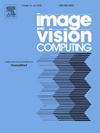FSBI: Deepfake detection with frequency enhanced self-blended images
IF 4.2
3区 计算机科学
Q2 COMPUTER SCIENCE, ARTIFICIAL INTELLIGENCE
引用次数: 0
Abstract
Advances in deepfake research have led to the creation of almost perfect image manipulations that are undetectable to the human eye and some deepfake detection tools. Recently, several techniques have been proposed to differentiate deepfakes from real images and videos. This study introduces a frequency enhanced self-blended images (FSBI) approach for deepfake detection. This proposed approach utilizes discrete wavelet transforms (DWT) to extract discriminative features from self-blended images (SBI). The features are then used to train a convolutional network architecture model. SBIs blend the image with itself by introducing several forgery artifacts in a copy of the image before blending it. This prevents the classifier from overfitting specific artifacts by learning more generic representations. These blended images are then fed into the frequency feature extractor to detect artifacts that could not be detected easily in the time domain. The proposed approach was evaluated on FF++ and Celeb-DF datasets, and the obtained results outperformed state-of-the-art techniques using the cross-dataset evaluation protocol, achieving an AUC of 95.49% on Celeb-DF dataset. It also achieved competitive performance in the within-dataset evaluation setup. These results highlight the robustness and effectiveness of our method in addressing the challenging generalization problem inherent in deepfake detection. The code is available at https://github.com/gufranSabri/FSBI.
求助全文
约1分钟内获得全文
求助全文
来源期刊

Image and Vision Computing
工程技术-工程:电子与电气
CiteScore
8.50
自引率
8.50%
发文量
143
审稿时长
7.8 months
期刊介绍:
Image and Vision Computing has as a primary aim the provision of an effective medium of interchange for the results of high quality theoretical and applied research fundamental to all aspects of image interpretation and computer vision. The journal publishes work that proposes new image interpretation and computer vision methodology or addresses the application of such methods to real world scenes. It seeks to strengthen a deeper understanding in the discipline by encouraging the quantitative comparison and performance evaluation of the proposed methodology. The coverage includes: image interpretation, scene modelling, object recognition and tracking, shape analysis, monitoring and surveillance, active vision and robotic systems, SLAM, biologically-inspired computer vision, motion analysis, stereo vision, document image understanding, character and handwritten text recognition, face and gesture recognition, biometrics, vision-based human-computer interaction, human activity and behavior understanding, data fusion from multiple sensor inputs, image databases.
 求助内容:
求助内容: 应助结果提醒方式:
应助结果提醒方式:


